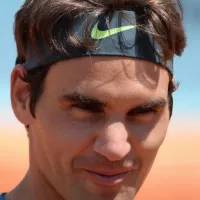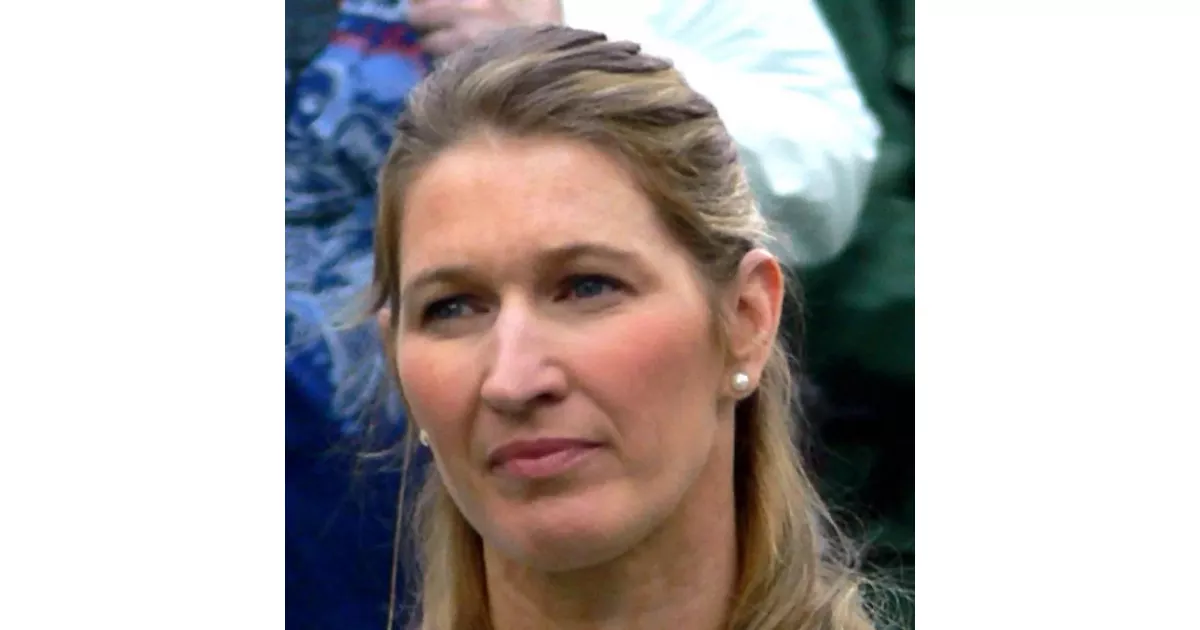Steffi Graf is a German former professional tennis player widely regarded as one of the greatest of all time. She held the world No. 1 ranking for a record 377 weeks and finished the year as No. 1 a record eight times. Graf won 107 WTA singles titles, including 22 major singles titles, the second-most in the Open Era. Notably, she is the only tennis player to achieve a quadruple career Grand Slam, winning each major tournament at least four times.
June 1938: Peter Graf's Birth
In June 1938, Peter Graf, Steffi's father, was born.
1953: Maureen Connolly Brinker's Grand Slam
In 1953, Maureen Connolly Brinker achieved the Grand Slam in tennis.
1968: Open Era Begins
In 1968, the Open Era began in tennis. This is relevant as Steffi Graf has the second-most major women's singles titles since the start of this era.
June 1969: Steffi Graf's Birth
In June 1969, Stefanie Maria Graf was born.
1970: Margaret Court's Grand Slam
In 1970, Margaret Court achieved the Grand Slam in tennis.
1975: Chris Evert's Ranking
In 1975, Chris Evert began a period of holding the number one ranking in women's tennis.
1976: Evonne Goolagong's Ranking
In 1976, Evonne Goolagong held the number one ranking in women's tennis.
1978: Martina Navratilova's Ranking
In 1978, Martina Navratilova began a period of holding the number one ranking in women's tennis.
1978: Hard Court Introduction at US Open
In 1978, hard courts were introduced at the US Open, changing the surface composition of the Grand Slam.
1980: Tracy Austin's Ranking
In 1980, Tracy Austin held the number one ranking in women's tennis.
October 1982: First Professional Tournament
In October 1982, Steffi Graf participated in her first professional tournament in Filderstadt, Germany, where she lost her first-round match.
1982: European Championships Win
In 1982, Steffi Graf won the European Championships in both the 12s and 18s categories, showcasing her early talent and dominance in junior tournaments.
1983: Ranking Climbs
In 1983, Steffi Graf, at 13 years old, was ranked world No. 124. Although she won no titles, her ranking climbed to world No. 98.
1983: First Major Appearance
In 1983, at the age of 13, Steffi Graf became the youngest player to appear in the main draw of a major tournament at the French Open.
1984: First 6-0 Set Loss Since 1984
During a French Open semifinal, Graf suffered one of the worst defeats of her career and lost her first 6-0 set since 1984 against Sánchez Vicario.
1984: Racquet Used
From 1984 to 1993, Steffi Graf played with the Dunlop Max 200G racquet.
1984: International Attention and Olympic Win
In 1984, Steffi Graf gained international attention at Wimbledon and, representing West Germany, won the tennis demonstration event at the Olympic Games in Los Angeles as a 15-year-old, although no medals were awarded.
1984: Mixed Doubles at US Open
In 1984, Steffi Graf partnered with Charlie Pasarell at the US Open for mixed doubles.
1985: Chris Evert's Ranking
In 1985, Chris Evert concluded a period of holding the number one ranking in women's tennis.
1985: Emerging Challenger
In 1985, Steffi Graf emerged as a top challenger to Martina Navratilova and Chris Evert, despite losing to them multiple times.
1985: Opel Endorsement Deal
In 1985, Steffi Graf signed a ten-year endorsement deal with car manufacturer Opel.
1985: Ranking Improvement
In 1985, Steffi Graf's ranking steadily improved to No. 6 in the world, despite not winning any titles.
1985: Limited Play Schedule
In 1985, Steffi Graf's schedule was closely controlled by her father, Peter Graf, who limited her play to prevent burnout. She played only ten events leading up to the US Open.
April 1986: First WTA Tournament Win
On April 13, 1986, Steffi Graf won her first WTA tournament at the Family Circle Cup in Hilton Head, South Carolina, marking her first victory over Chris Evert.
1986: Loss in Australian Open Quarterfinal
In 1986, Graf lost in the Australian Open quarterfinal to Jana Novotná, marking the first time she hadn't reached the semifinals of a Grand Slam singles tournament since the 1986 French Open.
1986: Doubles Partnership with Sabatini
In 1986, Steffi Graf started a doubles partnership with her rival Gabriela Sabatini. In their partnership they reached the finals of the French Open in 1986, 1987 and 1989, and won the 1988 Wimbledon Championships together.
1986: German Sportsperson of the Year Award
In 1986, Steffi Graf was elected as the German Sportsperson of the Year.
1986: Top Challenger
In early 1986, Graf continued to be a top challenger to Navratilova and Evert, consistently reaching tournament stages but facing defeats.
August 1987: Ranked World No. 1
In August 1987, Steffi Graf was ranked world No. 1 for 186 consecutive weeks
1987: Martina Navratilova and Steffi Graf's Ranking
In 1987, Martina Navratilova concluded a period of holding the number one ranking, while Steffi Graf began her reign at number one.
1987: French Open Finals
In 1987, Steffi Graf and Gabriela Sabatini reached the finals of the French Open.
1987: Grand Slam Breakthrough
In 1987, Steffi Graf had a strong start to the year with six tournament victories. She later defeated Martina Navratilova in the French Open final, securing her Grand Slam breakthrough.
1987: Winning Percentage and No. 1 Ranking
In 1987, Steffi Graf had a win-loss record of 75-2. On August 17, after defeating Evert, Graf became the world No. 1 for the first time, holding the ranking for 186 consecutive weeks.
1987: First Major Win
In 1987, Steffi Graf secured her first major title at the French Open, signaling the end of Chris Evert and Martina Navratilova's dominance.
1987: Awards
In 1987, Steffi Graf was voted the ITF World Champion and WTA Player of the Year.
1988: First French Open Title Since 1988
Graf won her first French Open title since 1988 with a three-set victory over Mary Joe Fernández. Graf also became only the second tennis player in history to win a Slam on hardcourt, clay, and grass all in the same season.
1988: Golden Slam Achievement
In 1988, Graf achieved the Golden Slam by winning all four major titles and an Olympic gold medal in the same year, marking a period of dominance.
1988: Won slam on hardcourt, clay, and grass
In 1988, Graf became only the second tennis player in history to win a Slam on hardcourt, clay, and grass all in the same season.
1988: Wimbledon Doubles Championship
In 1988, Steffi Graf and Gabriela Sabatini won the Wimbledon Championships together in doubles.
1988: Mixed Doubles at Wimbledon with Pavel Složil
In 1988, Steffi Graf partnered with her coach Pavel Složil at Wimbledon for mixed doubles.
1988: Australian Open Win
In 1988, Steffi Graf started the year by winning the Australian Open, defeating Chris Evert in the final without losing a single set during the entire tournament.
1988: Awards
In 1988, Steffi Graf was voted the ITF World Champion and WTA Player of the Year and was elected as the German Sportsperson of the Year.
1988: US Open Victory and Grand Slam
In 1988, Steffi Graf won the US Open by defeating Sabatini in the final, completing the Grand Slam. This Grand Slam remains the only one completed on three surfaces.
1988: US Open Semifinal Walkover
In 1988, Steffi Graf's semifinal match at the US Open was a walkover.
1989: Graf's Attempted Grand Slam
In 1989, Graf contested and won 27 Grand Slam singles matches. This means she failed to win the Grand Slam.
1989: Won Virginia Slims Championships
In 1989, Graf finished her year by winning her first Virginia Slims Championships since 1989, defeating Arantxa Sánchez Vicario in the final despite needing painkillers for a back injury.
1989: Winning Streak
In 1989, Graf's winning streak continued until the French Open loss. She survived a close match with Helena Sukova in the Australian Open semis, winning 6-4 in the third set.
1989: French Open Finals
In 1989, Steffi Graf and Gabriela Sabatini reached the finals of the French Open.
1989: End of Year Success
In 1989, Steffi Graf cemented her top-ranked status by beating Navratilova in the Virginia Slims Championships final. She ended the year with an 86-2 match record and the loss of only 12 sets.
1989: Australian Open Victory
In 1989, Steffi Graf extended her Grand Slam tournament winning streak to five events at the Australian Open, where she defeated Helena Suková in the final.
1989: Awards
In 1989, Steffi Graf was voted the ITF World Champion and WTA Player of the Year and was elected as the German Sportsperson of the Year.
July 1990: Personal Difficulties
In July 1990, Steffi Graf stated she could not fight as usual, likely referring to the scandal involving her father that was reported by Bild.
1990: Last Doubles Tournament with Sabatini
In 1990, Steffi Graf and Gabriela Sabatini played their last major doubles tournament together at the Wimbledon Championships, where they lost in the quarterfinals. After 1990, Graf would only play doubles sporadically.
1990: Awards
In 1990, Steffi Graf was voted the ITF World Champion and WTA Player of the Year.
March 1991: Ranked World No. 1
In March 1991, Steffi Graf was ranked world No. 1 for 186 consecutive weeks
1991: Monica Seles's Ranking
In 1991, Monica Seles began a period of holding the number one ranking in women's tennis.
1991: Challenges and Ranking Changes
In 1991, Steffi Graf faced a tough year due to injury problems, personal difficulties, and loss of form. She briefly regained the top ranking after winning Wimbledon but lost it again after losing to Navratilova at the US Open.
1991: Mixed Doubles at Wimbledon
In 1991, Steffi Graf partnered with Henri Leconte at Wimbledon for mixed doubles.
1991: Günthardt approached during Virginia Slims Championships
In 1991, during the Virginia Slims Championships, Graf's father approached Heinz Günthardt, who later became her coach, marking the beginning of their collaboration.
1991: Steffi Graf Youth Tennis Center Dedication
In 1991, the Steffi Graf Youth Tennis Center in Leipzig was dedicated to her.
1991: Only Wimbledon Loss between 1991 and 1997
In 1994, Graf suffered her only loss at Wimbledon between 1991 and 1997, to Lori McNeil in the first round. This marked her first loss in a first round Grand Slam tournament in ten years.
1991: Sporadic Doubles Play
Starting in 1991, Steffi Graf began playing doubles sporadically, forming short-term partnerships with various players. She played her last Grand Slam doubles tournament at the 1999 Australian Open with Gorrochategui.
1992: Relationship with Michael Bartels
From 1992 to 1999, Steffi Graf dated racing driver Michael Bartels.
1992: Missed Australian Open due to Rubella
In 1992, Graf missed the Australian Open due to a bout of rubella. Losses marked her year with a semifinal loss to Jana Novotná in Chicago.
1992: Monica Seles' Attempted Grand Slam
In 1992, Monica Seles contested and won 27 Grand Slam singles matches. This means she failed to win the Grand Slam.
1992: Mixed Doubles at Wimbledon with Heinz Günthardt
In 1992, Steffi Graf partnered with her coach Heinz Günthardt at Wimbledon for mixed doubles.
1993: Racquet Used
From 1984 to 1993, Steffi Graf played with the Dunlop Max 200G racquet.
1993: Won slam on hardcourt, clay, and grass
In 1993, Graf became only the second tennis player in history to win a Slam on hardcourt, clay, and grass all in the same season.
1993: Graf's Attempted Grand Slam
In 1993, Graf contested and won 27 Grand Slam singles matches. This means she failed to win the Grand Slam.
1993: Losses and Title at German Open
In 1993, Graf started with four losses but secured her seventh title at the German Open in Berlin, overcoming Sabine Hack, Mary Joe Fernández, and Sabatini.
1993: US Open 3rd Round Walkover
In 1993, Steffi Graf's 3rd round match at the US Open was a walkover.
1993: Seles Stabbing Incident
In 1993, after Monica Seles was stabbed, Steffi Graf returned to dominance on the women's tour for several years.
1994: Rexona Endorsement Deal
From 1994 to 1998, Steffi Graf had an endorsement deal with Rexona.
1994: Victories and Injury
In 1994, Graf won the Australian Open and her next four tournaments, but later faced her first loss of the year in Hamburg. She aggravated a back injury at San Diego, and developed a bone spur. She still managed to reach the US Open final before the back injury took its toll.
1994: Mixed Doubles at Australian and French Open
In 1994, Steffi Graf partnered with Mark Woodforde at the Australian Open for mixed doubles, and with Henri Leconte at the French Open.
1994: Switch to Wilson
In 1994, Steffi Graf switched to Wilson racquets, first using the Wilson Pro Staff 7.0 lite.
1994: WTA Player of the Year Award
In 1994, Steffi Graf was voted the WTA Player of the Year.
December 1995: Bone Splinter Surgery
In December 1995, Graf underwent surgery to remove bone splinters from her left foot after missing the Australian Open.
1995: Arantxa Sánchez Vicario's Ranking
In 1995, Arantxa Sánchez Vicario held the number one ranking in women's tennis.
1995: Accusations of Tax Evasion
In 1995, Graf faced accusations of tax evasion, with her father's arrest and subsequent legal proceedings adding to a difficult year.
1995: French Open and Wimbledon Victories
In 1995, Graf won the French Open and Wimbledon, defeating Sánchez Vicario in both finals. She also secured a win against Monica Seles at the US Open final.
1995: Preference for a Two-Handed Backhand
In 1995, Steffi Graf admitted that she would have preferred having a two-handed backhand in retrospect.
1995: Awards
In 1995, Steffi Graf was voted the ITF World Champion and WTA Player of the Year.
1996: Won slam on hardcourt, clay, and grass
In 1996, Graf became only the second tennis player in history to win a Slam on hardcourt, clay, and grass all in the same season.
1996: Monica Seles's Ranking
In 1996, Monica Seles concluded a period of holding the number one ranking in women's tennis.
1996: Mixed Doubles at Wimbledon with Heinz Günthardt
In 1996, Steffi Graf partnered with her coach Heinz Günthardt at Wimbledon for mixed doubles.
1996: Wilson Pro Staff 7.5
In 1996, Steffi Graf switched to the Wilson Pro Staff 7.5 racquet.
1996: Awards
In 1996, Steffi Graf was voted the ITF World Champion and WTA Player of the Year.
1996: Loss to Novotna
In late 1996 Graf had a loss after withdrawing with injury after the first set of a match against Novotna.
1996: First Head-to-Head meeting since 1996
In late 1999, Steffi Graf's Farewell Tour involved a match against Arantxa Sánchez Vicario in Zaragoza, Spain, marking Graf and Sánchez Vicario's first head-to-head meeting since 1996.
1997: Only Wimbledon Loss between 1991 and 1997
In 1994, Graf suffered her only loss at Wimbledon between 1991 and 1997, to Lori McNeil in the first round. This marked her first loss in a first round Grand Slam tournament in ten years.
1997: Injury-Plagued Year and Surgery
In 1997, Graf lost the world No. 1 ranking to Martina Hingis and had a difficult year plagued by injuries, including reconstructive knee surgery.
1997: Martina Hingis' Attempted Grand Slam
In 1997, Martina Hingis contested and won 27 Grand Slam singles matches. This means she failed to win the Grand Slam.
1997: Steffi Graf and Martina Hingis's Ranking
In 1997, Steffi Graf concluded a period of holding the number one ranking, while Martina Hingis began her reign at number one.
1997: Injuries and Challenges
In 1997, Steffi Graf faced more injuries which posed challenges to her career.
1997: Left the Catholic Church
In 1997, Steffi Graf left the Catholic Church, citing personal reasons.
1997: Prosecution case dropped
In 1997, prosecutors dropped their case against Graf in when she agreed to pay a fine to the government and an unspecified charity.
1998: Rexona Endorsement Deal
From 1994 to 1998, Steffi Graf had an endorsement deal with Rexona.
1998: Lindsay Davenport's Ranking
In 1998, Lindsay Davenport began a period of holding the number one ranking in women's tennis.
1998: Continued Injuries
In 1998, Steffi Graf continued to struggle with injuries, affecting her performance and career.
1998: "Children for Tomorrow" Foundation
In 1998, Steffi Graf founded "Children for Tomorrow", a non-profit foundation for supporting children traumatized by war or other crises.
1998: Wilson Pro Staff 7.1
In 1998, Steffi Graf switched to the Wilson Pro Staff 7.1 racquet.
1998: Return and Wrist Surgery
In 1998, after missing a significant portion of the tour, Graf returned, had wrist surgery, and secured a title in Philadelphia.
August 1999: Retirement Announcement
In August 1999, shortly after retiring from a match in San Diego due to a strained hamstring, Steffi Graf, at age 30 and ranked No. 3, announced her retirement from professional tennis, citing a lack of motivation and fulfillment.
December 1999: Greatest Female Tennis Player of the 20th Century
In December 1999, Steffi Graf was named the greatest female tennis player of the 20th century by a panel of experts assembled by the Associated Press.
1999: Australian Open Quarterfinals
In 1999, Graf reached the quarterfinals of the Australian Open before losing to Monica Seles in two sets.
1999: Mixed Doubles at Wimbledon with John McEnroe
In 1999, Steffi Graf formed a much-publicized partnership with John McEnroe at Wimbledon, reaching the semifinals before withdrawing due to concerns about her hamstring and bronchitis affecting her singles final performance.
1999: Last Grand Slam Doubles Tournament
In 1999, Steffi Graf played her last Grand Slam doubles tournament at the Australian Open with Ines Gorrochategui, losing in the second round.
1999: German Sportsperson of the Year Award
In 1999, Steffi Graf was elected as the German Sportsperson of the Year.
1999: Switch to Wilson
In 1999, Steffi Graf was using Wilson racquets
1999: Final Major Title and Retirement
In 1999, Steffi Graf won her 22nd and final major title at the French Open, reached the Wimbledon final, and subsequently retired from the sport at the age of 30 while ranked world No. 3.
1999: Farewell Tour
In late 1999, Steffi Graf began her Farewell Tour playing a series of exhibition matches against former rivals in various countries including New Zealand, Japan, Spain, Germany and South Africa. She played Jelena Dokic in Christchurch, New Zealand, Amanda Coetzer in Durban, South Africa, and her former rival Arantxa Sánchez Vicario in Zaragoza, Spain.
February 2000: Farewell Tour Match in Tokyo and Nagoya
In February 2000, as part of her Farewell Tour, Steffi Graf played against Kimiko Date at Tokyo Metropolitan Gymnasium in Tokyo and Nagoya Rainbow Hall in Nagoya, winning in three sets.
October 2001: Marriage to Andre Agassi
On October 22, 2001, Steffi Graf married Andre Agassi in a private ceremony with only their mothers as witnesses.
2001: Martina Hingis and Jennifer Capriati's Ranking
In 2001, Martina Hingis concluded a period of holding the number one ranking, while Jennifer Capriati began her reign at number one.
2001: Preferred Name
In 2001, Steffi Graf indicated that she preferred to be called "Stefanie" instead of "Steffi".
2001: Marriage to Andre Agassi
In 2001, Steffi Graf married fellow tennis player Andre Agassi.
2001: Graf Prefers Stefanie
In 2001, Steffi Graf preferred to be called Stefanie.
2002: Jennifer Capriati, Venus Williams and Serena Williams's Ranking
In 2002, Jennifer Capriati concluded a period of holding the number one ranking, Venus Williams began a period of holding the number one ranking, and later in the year Serena Williams took over the number one ranking.
2003: Kim Clijsters and Justine Henin's Ranking
In 2003, Kim Clijsters and Justine Henin began holding the number one ranking in women's tennis.
2003: Birth of Daughter
In 2003, Steffi Graf and Andre Agassi had a daughter.
September 2004: Exhibition Match and Stadium Inauguration in Berlin
In September 2004, Steffi Graf played an exhibition match against Gabriela Sabatini in Berlin, Germany, winning in straight sets. She also hosted a charity gala and inaugurated a tennis stadium renamed the "Steffi Graf Stadion", and the proceeds from her match against Sabatini went to Graf's foundation, "Children for Tomorrow".
2004: Amélie Mauresmo's Ranking
In 2004, Amélie Mauresmo began a period of holding the number one ranking in women's tennis.
2004: International Tennis Hall of Fame Induction
In 2004, Steffi Graf was inducted into the International Tennis Hall of Fame.
2004: Induction into Tennis Hall of Fame
In 2004, Steffi Graf was inducted into the Tennis Hall of Fame, solidifying her legacy in the sport.
2004: Renaming of Berliner Tennis-Arena
In 2004, the Berliner Tennis-Arena was renamed Steffi-Graf-Stadion in honor of Steffi Graf.
July 2005: World Team Tennis Appearance
In July 2005, Steffi Graf competed in one tie of World Team Tennis (WTT) on the Houston Wranglers team. Graf lost her singles match to Elena Likhovtseva 5–4 and teamed with Ansley Cargill in women's doubles against Anna Kournikova and Likhovtseva but lost 5–2. She was successful, however, in the mixed doubles match.
2005: Maria Sharapova's Ranking
In 2005, Maria Sharapova began a period of holding the number one ranking in women's tennis.
2006: Lindsay Davenport's Ranking
In 2006, Lindsay Davenport concluded a period of holding the number one ranking in women's tennis.
2006: Roger Federer's Attempted Grand Slam
In 2006, Roger Federer contested and won 27 Grand Slam singles matches. This means he failed to win the Grand Slam.
2006: Endorsement Deal with Head
In 2006, Steffi Graf signed an endorsement deal with Head.
2007: Agassi Longines Ambassador
In 2007, Andre Agassi became a Longines ambassador.
January 2008: Prize Money Record Surpassed
In January 2008, Lindsay Davenport surpassed Steffi Graf's career prize-money earnings record of US$21,895,277.
2008: Justine Henin, Ana Ivanovic and Jelena Janković's Ranking
In 2008, Justine Henin concluded a period of holding the number one ranking, with Ana Ivanovic and Jelena Janković also reaching the number one spot.
2008: Advertisements with Andre Agassi
In 2008, Steffi Graf appeared in advertisements and television commercials with Andre Agassi including Canon Inc. and Longines.
2008: "Dream Match 2008" Exhibition
In 2008, Steffi Graf lost an exhibition match against Kimiko Date at Ariake Colosseum in Tokyo. As part of the event, billed as "Dream Match 2008", she defeated Martina Navratilova in a one-set affair 8–7, with Graf winning a tiebreaker 10–5. It was the first time in 14 years Graf had played Navratilova.
2008: German Sports Hall of Fame Induction
In 2008, Steffi Graf was inducted into the German Sports Hall of Fame.
2009: Jelena Janković and Dinara Safina's Ranking
In 2009, Jelena Janković concluded a period of holding the number one ranking, while Dinara Safina reached the number one spot.
2009: Exhibition Matches at Wimbledon
In 2009, Steffi Graf played a singles exhibition match against Kim Clijsters and a mixed doubles exhibition alongside husband Andre Agassi against Tim Henman and Clijsters as part of a test event and celebration for the newly installed roof over Wimbledon's Centre Court. She lost a lengthy one-set singles match to Clijsters and also the mixed doubles.
2010: Caroline Wozniacki's Ranking
In 2010, Caroline Wozniacki began a period of holding the number one ranking in women's tennis.
2010: Collaboration with Head
In 2010, Steffi Graf and Andre Agassi collaborated with Head to develop the new line of Star Series tennis racquets.
2010: WTT Smash Hits Exhibition
In 2010, Steffi Graf participated in the WTT Smash Hits exhibition in Washington, D.C. to support the Elton John AIDS Foundation. Graf played in the celebrity doubles, women's doubles, and mixed doubles before straining her left calf muscle and being replaced by Anna Kournikova.
2011: Kim Clijsters's Ranking
In 2011, Kim Clijsters concluded a period of holding the number one ranking in women's tennis.
March 2012: Greatest Female Tennis Player Ever
In March 2012, Tennis Channel picked Steffi Graf as the greatest female tennis player ever in their list of 100 greatest tennis players of all time.
2012: Maria Sharapova and Victoria Azarenka's Ranking
In 2012, Maria Sharapova concluded a period of holding the number one ranking, while Victoria Azarenka began her reign at number one.
November 2013: Death of Peter Graf
In November 2013, Peter Graf, Steffi Graf's father, passed away.
2013: Victoria Azarenka's Ranking
In 2013, Victoria Azarenka concluded a period of holding the number one ranking in women's tennis.
2015: Novak Djokovic's Attempted Grand Slam
In 2015, Novak Djokovic contested and won 27 Grand Slam singles matches. This means he failed to win the Grand Slam.
2015: Brand Ambassador for Kerala Tourism
In 2015, Steffi Graf was appointed as the brand ambassador of Kerala tourism, for promoting Ayurveda in North America and Europe.
2015: Jean Borotra Sportsmanship Award
In 2015, Steffi Graf was the recipient of the International Club's Jean Borotra Sportsmanship Award.
2016: Angelique Kerber's Ranking
In 2016, Angelique Kerber began a period of holding the number one ranking in women's tennis.
2016: Serena Williams Ties Record
In 2016, Serena Williams tied Steffi Graf's record of 186 consecutive weeks at world No. 1.
2016: Greatest Players of All Time
In a 2016 interview, Serena Williams named Steffi Graf and Roger Federer when asked to name the greatest players of all time.
2017: Serena Williams, Karolína Plíšková, Garbiñe Muguruza and Simona Halep's Ranking
In 2017, Serena Williams concluded a period of holding the number one ranking, Karolína Plíšková, Garbiñe Muguruza and Simona Halep held the number one ranking in women's tennis.
November 2018: Greatest Women's Tennis Player
In November 2018, Tennis.com polled its readers to choose the greatest women's tennis player of all time and Steffi Graf came in first.
2018: Caroline Wozniacki's Ranking
In 2018, Caroline Wozniacki concluded a period of holding the number one ranking in women's tennis.
2019: Simona Halep and Naomi Osaka's Ranking
In 2019, Simona Halep concluded a period of holding the number one ranking, while Naomi Osaka held the number one ranking in women's tennis.
July 2020: Greatest Female Tennis Player
In July 2020, The Guardian polled its readers to determine the greatest female tennis player of the past 50 years, and Steffi Graf was the clear favorite.
2021: Novak Djokovic's Attempted Grand Slam
In 2021, Novak Djokovic contested and won 27 Grand Slam singles matches. This means he failed to win the Grand Slam.
2022: Ashleigh Barty and Iga Świątek's Ranking
In 2022, Ashleigh Barty concluded a period of holding the number one ranking, while Iga Świątek began her reign at number one.
2022: Great Immigrant Award
In 2022, Steffi Graf was an honoree by the Carnegie Corporation of New York's Great Immigrant Award.
2023: Aryna Sabalenka's Ranking
In 2023, Aryna Sabalenka began a period of holding the number one ranking in women's tennis.
2023: Novak Djokovic's Attempted Grand Slam
In 2023, Novak Djokovic contested and won 27 Grand Slam singles matches. This means he failed to win the Grand Slam.
2024: Iga Świątek's Ranking
In 2024, Iga Świątek continued to hold the number one ranking in women's tennis.
2025: Aryna Sabalenka's Ranking
In 2025, Aryna Sabalenka continued to hold the number one ranking in women's tennis.
Mentioned in this timeline

Serena Williams is a highly accomplished American former professional tennis...

Roger Federer is a retired Swiss professional tennis player widely...

Novak Djokovic a Serbian professional tennis player holds the record...
Germany officially the Federal Republic of Germany is a Western...

Los Angeles is the most populous city in California and...
Virginia officially the Commonwealth of Virginia is a state located...
Trending
14 minutes ago Pakistan to bowl first after winning toss against Sri Lanka T20 Tri-Series

6 months ago Jenna Bush Hager's on-air slip: Al Roker and Barbara Bush 'made out'?
1 hour ago New handbag, dishes, snacks, drinks, and holiday mocktails appear at Disney Springs.
2 hours ago Litton criticizes Shamim's axing as Bangladesh struggles with middle-order before World Cup.
2 hours ago Fubo TV loses NBC channels due to carriage dispute; customer credit offered.

2 hours ago Mike Tomlin Rumored to Want a Change, Possibly Leaving Steelers After Season.
Popular
Aftyn Alyssa Behn is an American politician currently serving as...

William Franklin Graham III commonly known as Franklin Graham is...

Candace Owens is an American conservative political commentator and author...

XXXTentacion born Jahseh Dwayne Ricardo Onfroy was a controversial yet...

Marjorie Taylor Greene known as MTG is a U S...

Maxine Waters is an American politician who has served as...
